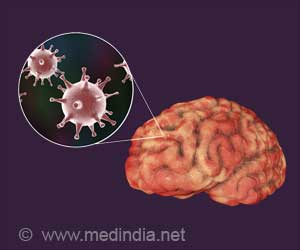Neutrophil is selective of its reaction to a particular variety of sugar present on the surface of pathogenic fungi.
Neutrophil is selective of its reaction to a particular variety of sugar present on the surface of pathogenic fungi.
According to Biology textbooks neutrophils are regarded as mindless killers. White blood cells (WBC) form an integral part of blood. They are the policeman guarding our internal body. They protect our body from various kinds of infections caused by bacteria and fungi by spotting and wiping out any intruder that invades the body. A new study shows that neutrophils may in fact differentiate between their targets. This new indication can prove useful in the research for new drugs to battle lethal pathogens.A scientist in the lab of Whitehead Member Gerald Fink has discovered that neutrophils recognize and respond to a specific form of sugar called beta-1, 6-glucan on the surface of fungi. This sugar comprises just a small fraction of the fungal cell wall, much less than another sugar with a slightly different chemical conformation called beta-1,3-glucan. Because the scarce form of the sugar elicits a much stronger reaction from immune cells than the abundant one, it appears that neutrophils can distinguish between two nearly identical chemicals.
“These results show that engulfment and killing by neutrophils varies, depending on cell wall properties of the microbe,” explains Whitehead postdoctoral researcher Ifat Rubin-Bejerano, first author on the paper, which appears July 11 in the journal Cell Host & Microbe. “We showed that neutrophils respond in a completely different way to slight changes in sugar composition. If we are able to use this unique sugar to excite the immune system, it may help the human body fight infection.”
“Previously, everyone thought that these key cells of the immune system weren't picky and would eat anything that looked foreign,” adds Fink, who is also an MIT professor of biology. “Ifat's work has shown that the cells aren't little Pac-Men, but can discriminate one pathogen from another.”
Rubin-Bejerano had evidence that neutrophils respond to beta-glucan. After coating tiny beads with a variety of substances (including beta-1,3-glucan and beta-1,6-glucan), she exposed them to the neutrophils and was surprised to see a striking difference in their response to the two sugars. The neutrophils quickly engulfed many of the beads coated with beta-1,6-glucan, but only a few of those covered in beta-1,3-glucan.
Previous studies indicated that blood serum (basically blood minus cells) helps neutrophils recognize their enemies, so Rubin-Bejerano decided to look for clues to their response in this mixture. She identified several proteins in serum that bind to beta-1,6-glucan, but not beta-1,3-glucan, and then pinpointed a molecule on the surface of the neutrophil that recognizes these proteins.
Advertisements
Our bodies maintain a fine balance between the immune system and microbes. Antibiotics and antifungals tilt the balance in favor of the immune system by targeting the microbes directly. A substance like beta-1,6-glucan could help tilt this balance further by stimulating immune cells.
Advertisements
Source-Eurekalert
BIN/M






